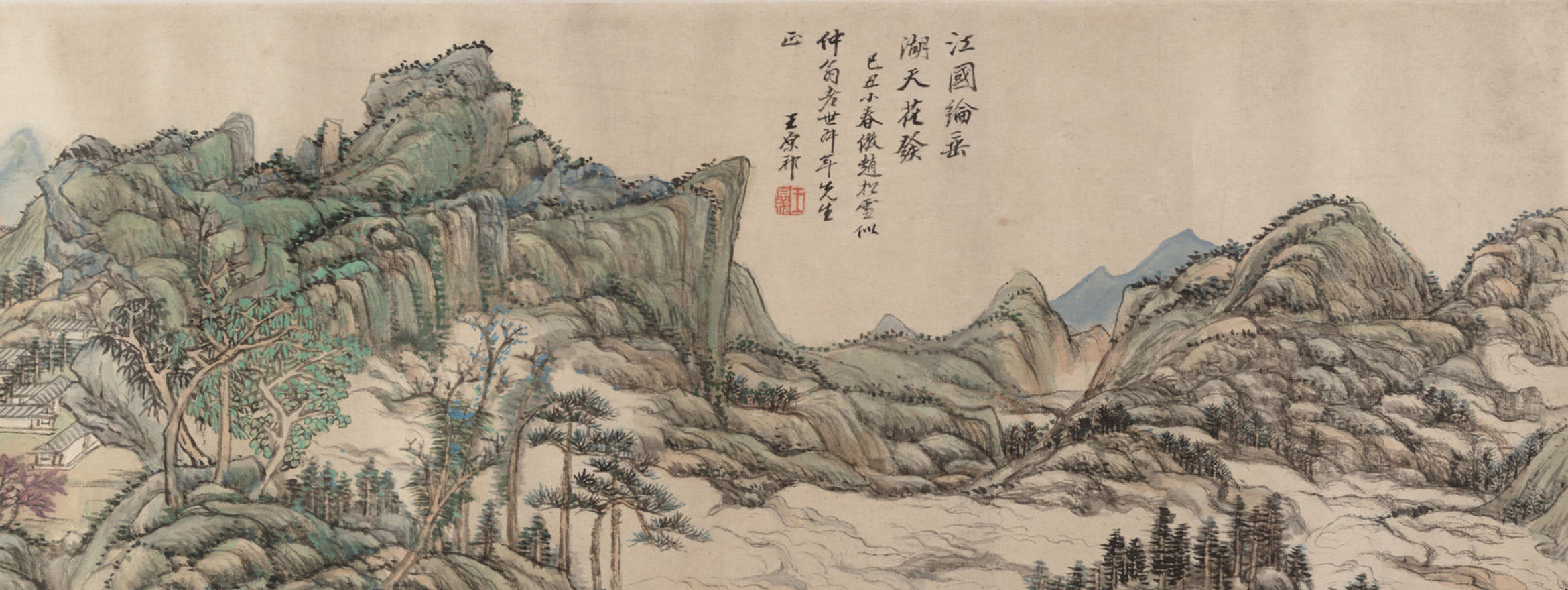Cultural Perspectives • 05 Apr 2019
Cosmic Engine of Imperial China
Looking Back at the Ancient World’s Finest Water Clock
Astronomy in China has a long history of innovation, tracing its pioneering roots back to the Bronze Age (between 2000 and 1600 BCE). Motivated by the belief that the movements of both the bodies in the sky and on the land were interconnected, early astronomers worked to devise a calendrical system to better predict the movement of the seasons.
Heavenly Stems & Earthly Branches
To measure time, the Chinese divided the sky into 10 heavenly stems (天干) and 12 earthy branches (地支) arranged around the ecliptic, to form a 60-year cycle (甲子). The 10 stems gave name to each of the 10 days in a week, with one month consisting of 3 weeks. The 12 branches were used as the names of the 12 months of the year.

This particular system called the sexagenary cycle (干支) became the traditional calendrical system in China and many other Asian countries, including Japan, Korea, and Vietnam. Recorded on oracle bones from the Shang dynasty (1766 – 1122 BC), people started using the sexagenary cycle with one month of about 29.5 days. Calculating each year to be 365.25 days long. (For more on F.P. Journe’s Unique Oracle Bone Script Rattrapante).

The Role of an Astronomer in Society
Another main purpose of using the cycle was to assist in Feng Shui and to predict fortune.
One of the foundations of traditional Chinese philosophy, The Unity of Universe and Human (天人合一), focuses on the integrity of space, mankind’s place in the universe. As both man and the universe are guided by the same forces and operate under the same laws, the emperors believed the position of the stars was intrinsically linked to the destiny of their country and their dynasty.
Chinese astronomers place in society, therefore, went well beyond the scope of what was expected from their European counterparts. They were valued for their ability to record time, measure astronomical phenomena and for their ‘fortune-telling’ abilities.
Thus, the ability to accurately measure and predict the movement of the stars and celestial bodies was the driving motivation behind the mechanical advancements in horology made by Chinese astronomers.

Advancing Zhang Heng’s Pioneering Innovation
Amongst all of the ancient astronomers who looked to the sky, Chinese polymath Zhang Heng (张衡) was the first to have invented a water-powered armillary sphere. An astronomical instrument used to depict the motion of celestial bodies. By linking the armillary sphere to a water-clock (kettle clepsydra), Heng’s invention was powered by water dripping from one pan to another, which would – due to the weight of the water – and with the help of a complicated gear-system, drive the gears and advance the armillary sphere.
As armillary spheres were used in China to aid in calendrical computations, precision was of utmost importance. Heng’s water-powered armillary sphere was seen as a technological breakthrough at the time because it’s movement would mimic the steady flow of the water powering it. This advancement in rate stability (advancement of the sphere) directly translated into more reliable astronomical calculations.

It wasn’t long before Zhang Heng’s astronomical instrument was widely used throughout China. With his water-powered instrument becoming the inspiration for successive generations of astronomers and mechanical engineers who in turn would leave their mark on history.

Su Song’s Cosmic Engine
In 1092 AD, Su Song (苏颂) created his massive water controlled ‘astronomical computer’ called the Cosmic Engine (水运仪象台), citing Zhang’s armillary sphere as his inspiration. It’s important to note that this machine was developed 200 years before the mechanical clock was created in Europe. This monumental ‘Engine’ was designed not only to tell time; it was designed to reveal how the stars and the earth move through space.
Powered by a special water wheel with a complex mechanical structure inside, the Cosmic Engine was a 12-metre tall apparatus that included four major systems made up of 400 parts. Fortunately for us, we know exactly how his construction was built. As Su had the rare foresight (this was 900 years ago) to see the importance of his innovation for the generations to come, including his detailed blueprints in a book covering his life’s achievements. Titled Xinyi Xiangfayao (lit. ‘Essentials of a New Method for Mechanising the Rotation of an Armillary Sphere and a Celestial Globe’).

What Did It Look Like?
The apparatus looked like a tower with a 5-level tall mechanism. The front of the tower was a pagoda configuration with each of the 5 levels featuring mannequins that appeared to ring bells, holding signs to indicate the hours.
Inside the tower, innovative technologies were involved. Simulating the motions of the stars, a celestial bronze globe (depicting a star chart) turned in synchronisation with an armillary sphere atop the tower. When the celestial globe rotated, so too did the sphere, in turn moving the indicators (used to tell the time). This meant that the engineers who used the machine could measure various astronomical observations, by comparing the positions of the armillary sphere and the celestial globe.

How Did It Work?
Inside the tower, there was a large vertical wheel with 36 scoops. Each scoop would fill with water from a water tank that was kept at a constant volume. The pivoting and emptying of each scoop would cause the large vertical wheel (think of it as an escape wheel) to advance. This continual filling, pivoting, emptying and rotating powered the whole Cosmic Engine.
By keeping the water supply tank at a constant volume, the rate the scoops filled and thus, the rate the scoops emptied was kept at a constant. The rotation of the vertical wheel would in turn advance – through a complex gearing-system – a series of horizontal wheels affixed with the aforementioned figures, used to tell the time.
This connection between the heavens and the flow of water is described quite nicely in a quote from Su Song himself:
“the principle of the use of water-power for the driving mechanism has always been the same. The heavens move without ceasing but so also does water flow (and fall). Thus if the water is made to pour with perfect evenness, then the comparison of the rotary movements (of the heavens and the machine) will show no discrepancy or contradiction; for the unresting follows the unceasing.”
The Legacy of the Cosmic Engine
Su’s Cosmic Engine was emblematic of the mechanical innovation taking place in China at the time. Although unbeknownst to much of the world at the time, Su’s innovations have found their place in the history of horology, belonging to a long lineage of mechanical genius that laid the foundations for the modern watchmaking landscape. The ticking of a modern watch and the flow of Su’s Cosmic Engine share a lot in common.
Although destroyed by the invading Jin Army (after having ended the Northern Song Dynasty), a 1:1 scale reconstruction can be seen at the Science and Technology Museum in Beijing. Reconstructed thanks to Su’s thoroughly detailed treatise, which fortunately fared much better than his clock, surviving in its original form.
Banner Image: Fishing in River Country at Blossom Time (清 王原祁 江國垂綸圖 卷), Wang Yuanqi (1709)











